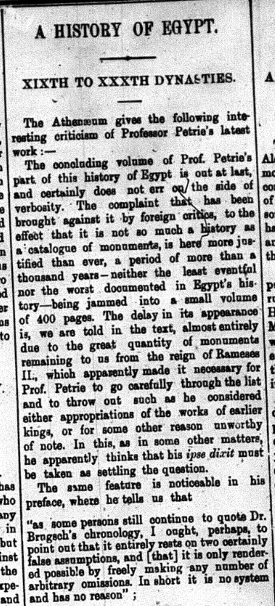Egyptology & Archeology
 October 6, 1905
October 6, 1905Egyptology has caputured pop-culture imagination owing to movies like The Mummy, and exhibits like King Tut. Films often emphasize the mysticism, magic, or exoticism of Egyptian artefacts and Tombs. The Egyptian Gazette, however, provides a closer perspective, both in time and location.
While the excavation and discovery of these tombs has historical significance on a global scale, the local perspective brings the actual characters that advanced the discovery of these relics to light. The newspaper serves as a medium for criticism and discourse, which time and distance have buried. The newspaper even brags about the abundance of archeological remains in region.
This liveliness caught me off guard, and reminds me that the study of history always lives and breaths, not confined to memory or buried between the covers of a textbook.
No, for the people of Alexandria, the archeological wealth around them caputures the public eye and excitement enough for the Egyptian Gazette to publish a story about archeology in two seperate issues, in addition to a review.

The newspaper discusses a work by Dr. Petrie, A History of Egypt during the XVIIth and XVIIIth Dynasties. From the newspaper, 6th Oct 2016:
The complaint that has been brought against it by foreign critics, to the effect that it is not so much a history as a catalogue of monuments, is here more justified than ever, a period of more than a thousand years - neither the least eventful nor the worst documented in Egypts history-being jammed into a small volume of 400 pages. The delay in its appearance is, we are told in the text, almost entirely due to the groat quantity of monuments remaining to us from the reign of Rameses II., which apparently made it necessary for Prof. Petrie to go carefully through the list and to throw out such as he considered either appropriations of the works of earlier kings, or for some other reason unworthy of note.
The work was delayed specifically because there was so much history, and so many monuments to examine and study!